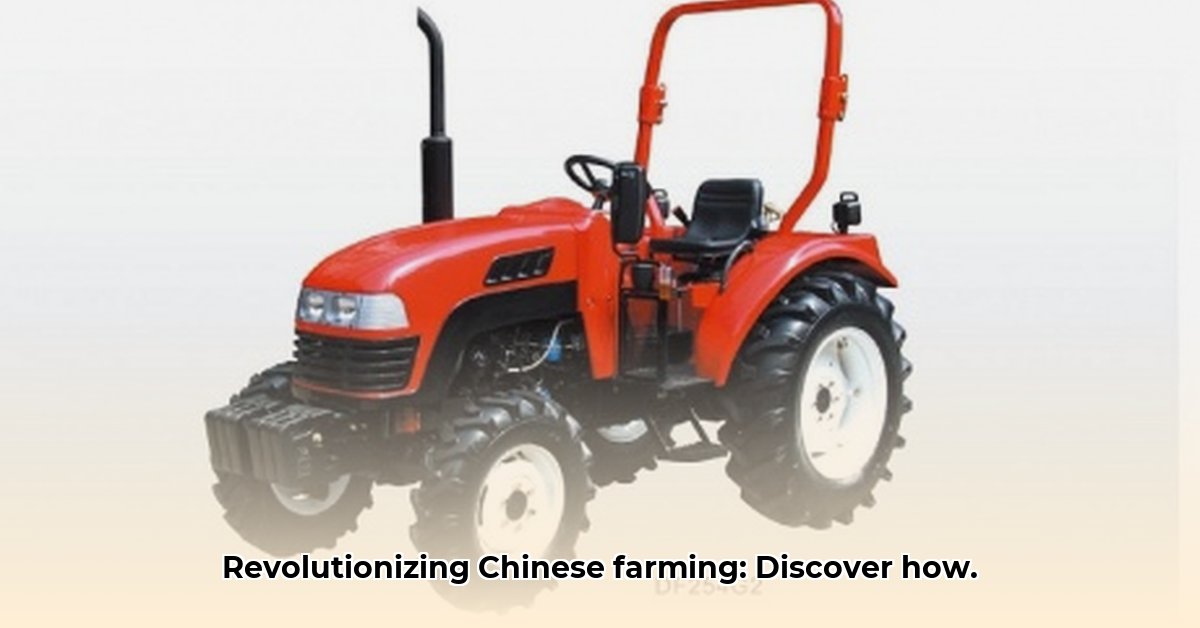
Dongfeng's Role in Modernizing Chinese Agriculture
Dongfeng Agricultural Machinery (DFAM), established in 1952, has been instrumental in China's agricultural modernization. Its extensive product range, encompassing small tractors ideal for smaller farms to heavy-duty machines for large-scale operations, caters to the diverse needs of China's agricultural landscape. This adaptability has positioned DFAM as a key player in transforming farming practices from labor-intensive methods to more efficient and technologically advanced ones. But how does DFAM contribute to sustainable agriculture, and what challenges lie ahead? For more on other tractor brands, check out tractor reviews.
More Than Efficiency: DFAM's Sustainability Impact
While increased efficiency through mechanization is a significant benefit—allowing for greater food production with less land—a holistic assessment of DFAM's sustainability impact requires a deeper dive. Increased efficiency translates to reduced pressure on natural habitats and potentially lower deforestation rates. Furthermore, mechanization can lead to enhanced worker safety and potentially higher wages for farmers. However, to fully understand DFAM's environmental footprint, we need comprehensive data, including a detailed life cycle assessment (LCA) covering manufacturing, operation, and disposal. This data is currently lacking, hindering a complete evaluation of its sustainability contribution.
How can we effectively measure and improve the environmental performance of agricultural machinery like Dongfeng tractors? The answer lies in a thorough examination of their entire lifecycle.
"A comprehensive life cycle assessment is crucial for understanding the genuine sustainability of agricultural machinery," says Dr. Li Wei, Professor of Agricultural Engineering at Zhejiang University. "This should encompass not only greenhouse gas emissions but also resource consumption, waste generation, and impacts on soil health."
Sustainable Farming: Key Steps for a Greener Future
To navigate the path toward a more sustainable future, DFAM and associated stakeholders must focus on several critical areas:
For DFAM:
- Comprehensive LCAs: Conducting thorough LCAs on key tractor models will highlight areas for improvement in reducing environmental impact.
- Investment in Green Technology: Significant investment in research and development of electric or hybrid tractors is essential for alignment with global sustainability goals.
- Transparency and Reporting: Adopting transparent sustainability reporting that meets international standards will build trust and demonstrate commitment to environmental responsibility.
For International Buyers:
- Due Diligence: Before purchasing, potential buyers should thoroughly assess whether DFAM's practices align with international sustainability guidelines.
- Collaborative Improvement: Engaging with DFAM to encourage improvements in supply chain sustainability and product lifecycle management will foster a collaborative approach to enhanced sustainability.
For the Chinese Government:
- Incentivizing Sustainability: Providing incentives for LCA studies and the adoption of cleaner agricultural technologies will stimulate innovation and adoption of more eco-friendly practices.
- Strategic R&D Investment: Investment in R&D for sustainable farm mechanization is essential for long-term agricultural growth and environmental protection.
For Chinese Farmers:
- Cost-Benefit Analysis: Farmers need access to comprehensive cost-benefit analyses of new equipment, considering factors like fuel efficiency, maintenance costs, and long-term environmental impacts.
- Equipment Maintenance: Adherence to best practices for equipment maintenance is crucial to extend tractor lifespan and reduce waste. Proper maintenance can extend the lifespan of the machinery by as much as 20%, significantly reducing the need for early replacement.
Addressing Challenges: A Realistic Assessment
One significant challenge is DFAM's current reliance on fossil fuels. Transitioning to electric or hybrid models, while demanding significant investment, is paramount for reducing greenhouse gas emissions. Additionally, supply chain transparency and robustness are vital for mitigating risks associated with material sourcing and production processes. A lack of readily available sustainability data remains a significant hurdle, requiring a concerted effort to collect and report comprehensive data. Finally, adapting to evolving emission regulations requires proactive compliance and ongoing research and development. Does the current regulatory environment sufficiently incentivize the adoption of sustainable technologies?
The Regulatory Landscape and its Impact
China's increasingly stringent environmental regulations will significantly affect agricultural machinery manufacturers like DFAM. The successful navigation of this evolving regulatory framework hinges on innovation and transparency. By proactively embracing sustainable practices and transparent reporting, DFAM can enhance its competitiveness and contribute significantly to a more sustainable future for Chinese agriculture. Ongoing research and collaboration remain crucial in addressing the challenges and realizing the full potential of sustainable agricultural mechanization.
Assessing Dongfeng's Environmental Impact: A Methodological Approach
To accurately assess the environmental impact of Dongfeng's agricultural machinery, a multi-step process is essential:
- Comprehensive Data Collection: Gather data on fuel consumption, emissions (CO2e, NOx, particulate matter), and operational hours for various DFAM tractor models.
- Rigorous LCA: Conduct a robust LCA, comparing Dongfeng's machines to competitors, encompassing the entire lifecycle from raw material extraction to end-of-life management.
- Real-world Field Studies: Conduct field studies to measure actual fuel efficiency, soil compaction, and noise levels under operational conditions.
- Regulatory Compliance Assessment: Evaluate compliance with current and future emission standards and environmental regulations.
- Technological Innovation Analysis: Investigate DFAM’s investment and progress in developing sustainable technologies, like alternative fuel systems and precision farming techniques.
This multi-faceted assessment considers the entire lifecycle and real-world operational aspects to provide a comprehensive evaluation of DFAM’s environmental impact. By embracing this process, both DFAM and the broader agricultural community can work towards a more sustainable future.